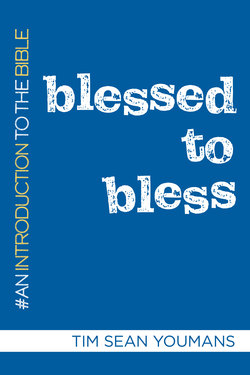Читать книгу Blessed to Bless - Tim Sean Youmans - Страница 11
На сайте Литреса книга снята с продажи.
Оглавление1
The Creation Story(s)
Read Genesis chapters 1–2.
TThere isn’t one creation story, but two. The original stories in Hebrew were not written with chapters and verses; those were added around the fifteenth century BCE (before the Common Era) so people could locate the stories. Sometimes those chapters and verses are mislocated and change the meaning of the story. This is one of those times.
Story One: Genesis 1:1–2:4
Story Two: Genesis 2:5–24
Go look again at the first two chapters and notice where one story ends and the second one starts.
Why does this matter? Notice how they differ. We are not the least bit interested in playing “gotcha” with ancient Hebrew stories and proving them “wrong.” The ways in which they are different doesn’t lessen their value, but asks you, as the reader, to wonder why.
The first story is mostly about the natural world. It is presented with a certain amount of order and in many ways reads like a list. It emphasizes God’s organization of nature, things having “kinds” and categories. It suggests God created with intention and purpose. It repeatedly calls what is created “good.” Pay close attention when any literary text repeats itself (including the Bible); it is trying to underscore that idea. The order and goodness of creation is an important Hebrew idea: creation is intrinsically good because God declared it so. That’s the good news. The bad news will, however, be just around the corner in Genesis, chapter 3.
In the first story, man and woman are created at the same time as the crowning achievement of creation. (In the second story, the man is created first, by himself. Then the woman is created later on, after he becomes lonely.) The first story conveys an engaging idea: human beings are created in the image of God (Latin: imago Dei). What it does not do, however, is spell out specifically what that means. What do you think it means? That we “look” like God? Wait, does God have white skin? Dark skin? Curly hair? Green eyes? What do you think being created with the imprint of God might mean? This question lead us to the intangible (hard to measure) aspects we might share: love, compassion, creativity, logic, humor, relationships.
Imago Dei is the Latin phrasing for the “image of God,” often used to describe the larger Hebrew concept of human beings sharing aspects of God’s nature.
The first story is like a prescientific approximation of a human scientific impulse, more primitive certainly, but the basic form of scientific thinking is embedded there. It is set up like a list that puts things into categories. Story number one is sort of “left brain.”
Story number two is less like an ordered observation and more like a situational drama. While story one is like a documentary, this one is like a sitcom. The man is created first, becomes lonely, and God creates a partner for him. The two stories speak to two different parts of human nature: the desire to catalogue and organize, and the desire for relationship. It is right and left brain thinking, side-by-side.
Young earth is the idea that the biblical creation accounts are literal descriptions of the earth’s origins, and if you track human history using this primeval text, the earth is approximately 6,000 years old.
Questions for Reflection or Discussion
1. If you were to write a story about the creation of the earth, would it be more like story number one or story number two?
2. The Hebrew tradition believes that human beings share the image of God. What do you think that could mean?
